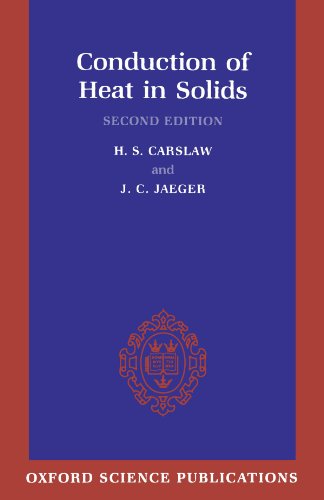Conduction of Heat in Solids epub
Par baker bobbie le vendredi, août 26 2016, 08:58 - Lien permanent
Conduction of Heat in Solids by H. S. Carslaw, J. C. Jaeger


Conduction of Heat in Solids H. S. Carslaw, J. C. Jaeger ebook
Format: djvu
Page: 517
ISBN: 0198533683, 9780198533689
Publisher: Oxford University Press, USA
Let's talk about heat – solids, liquids, and gases are made up of molecules. Heat from the part of the system to another part of or by a system to another of the system that heat conduction phenomenon. Conduction: Conduction is a process where the heat transfer takes place between the two solid bodies in contact, two regions of the same solid body. Heat Conduction takes place in solids, liquids, and gases, but works best in materials that have simple molecules that are located close to each other. Conduction usually can occur in solids such as various types of metal and glass. Conduction heat transfer is the heat transfer through medium without accompanied by displacement of the particle medium. I merely didn't want to derail your present argument. There is a simple solution, but first let's learn a little about heat conduction: 1. In this type of heat transfer, molecules don't move but they transfer energy using vibrations. Modes of Heat Transfer- Conduction. Conduction is the transfer of heat along a solid object; it is this process that makes the handle of a poker hot, even if only the tip is in the fireplace. Heat can be transferred by three processes: conduction, convection, and radiation. For example, metals are better conductor than wood or plastic. Also, there is no reason why to leave the idea the earth is billions of years as related to heat flow behind. In general “heat transfer” can be considered to explain both the Mpemba and the Leidenfrost effect, and there are three modes of heat transfer. Jaeger: Conduction of Heat in Solids (Oxford University Press, Oxford, 1959) p. Heat transfer heat transfer is one of three basic styles.